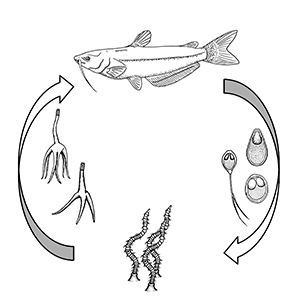Shallow-water coral reefs have seen large declines in coral cover over the last 40 years. This 19-page guide written by Joseph A. Henry, Roy P. E. Yanong, Maia P. McGuire, and Joshua T. Patterson and published by the UF/IFAS Program in Fisheries and Aquatic Sciences of the School of Forest Resources and Conservation describes Scleractinian (stony) corals that were once prevalent on reefs in Florida. The Coral Reef Protection Act in Florida prohibits damaging coral reef habitats in any way, and several of these species are federally protected under the Endangered Species Act. In their natural environment, these corals should never be handled or touched. Although several of the species discussed here are growing more numerous due to their wide tolerance, the overall condition of coral reefs along our coastline is declining, and the reefs are highly threatened because the most important reef-building corals are in a state of decline.
http://edis.ifas.ufl.edu/fa210
Tag: Roy P. E. Yanong
Myxosporidiosis (Myxozoan Infections) in Warmwater Fish
This 8-page publication written by Justin Stilwell and Roy P. E. Yanong and published by the Program in Fisheries and Aquatic Sciences of the School of Forest Resources and Conservation discusses myxozoans (multi-celled parasites of marine and freshwater invertebrates and fishes). It provides examples of myxozoans that infect aquarium and warmwater fish; describes them and shows their sizes, shapes, and structures; explains their life cycles and how they are transmitted; presents some methods for diagnosing infections in fish; and gives advice for treatment, prevention, and control of myxozoan infections.
http://edis.ifas.ufl.edu/fa201
Spironucleus Infestations (Spironucleosis) in Freshwater Aquarium Fish

A group of species of single-celled parasites called Spironucleus cause disease in aquacultured and captive fish. Found in cold, temperate, and tropical climates, Spironucleus species can infect a variety of freshwater and marine ornamental and food fish, as well as crustaceans and shellfish.
Five species of Spironucleus are currently recognized: S. salmonicida, S. barkhaus, and S. torosa can infest marine organisms, while S. salmonis and S. vortens can infest freshwater ornamental fish. This four-page fact sheet written by Ruth Francis-Floyd and Roy P. E. Yanong and published by the Department of Large Animal Clinical Sciences focuses on S. vortens and its effects on ornamental cichlids, explaining which cichlids are susceptible, how to identify S. vortens , and how to confirm, manage, and prevent S. vortens infestations. (Photo credit: Roy P. E. Yanong, UF/IFAS Extension Tropical Aquaculture Laboratory)
http://edis.ifas.ufl.edu/vm053

